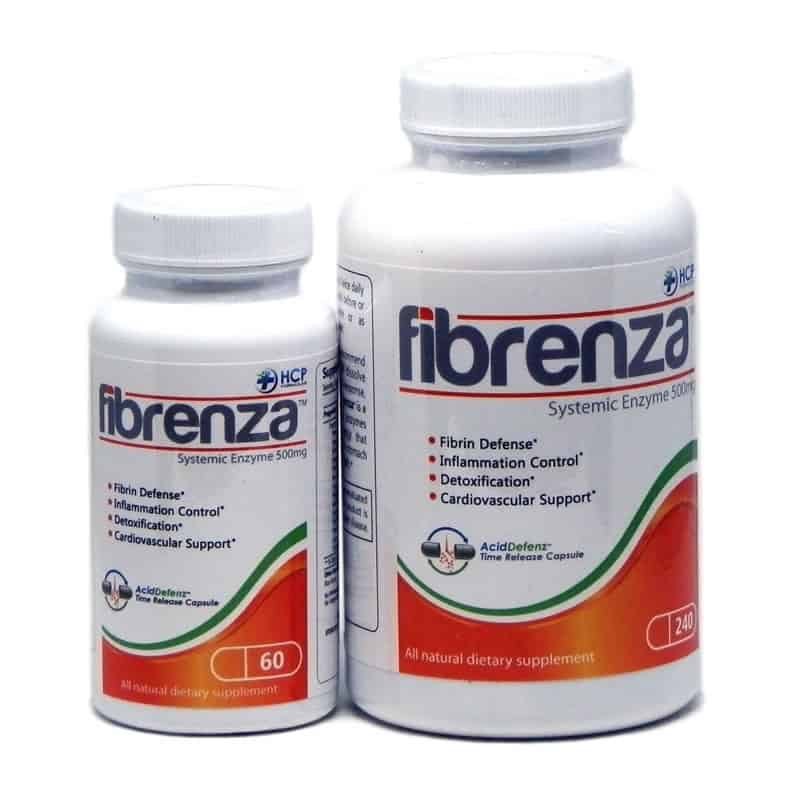No products in the cart.
Individual Enzymes Basics
Please Note:
This page is still under construction and your patience is appreciated.
Before reading this blog, it may help your understanding to read this first: Enzymes: Digestive and Systemic Explained.
You might also like to read Scientific References: Enzymes.
Enzyme Deficiency Symptoms
And health troubles that can be corrected with Enzyme supplementation:
- Digestive (gas, bloating, constipation, diarrhea)
- Inflamed digestive conditions
- Hormone imbalances (menstrual and menopausal)
- Chronic pain
- Chronic fatigue
- Frequent infections (cold, flu)
- Allergies
- Auto-immune disorders.
We recognize three basic types of digestive enzymes based on the nutrients they help decompose:
- Amylase (breaks down carbohydrates or starches into sugars)
- Protease (breaks down proteins into amino acids)
- Lipase (breaks down fats into glycerol and fatty acids)
Amylase
Common Amylase deficiency symptoms:
- Skin issues (pimples, rashes, inflammation)
- Low blood sugar
- Extreme low moods and mood swings
- Allergies.
Amylase production starts in your salivary glands (this type of amylase is called ptyalin), so the breakdown of carbohydrates can start during chewing, and it stays active after swallowing. It is also produced in the pancreas and small intestine, where it continues to further break down complex sugars into glucose. In the stomach, amylase is neutralized by the stomach acids, but later, in the small intestines, one more dose of amylase helps starches to completely break down.
Because there are different types of carbohydrates (keys), we need more types of amylase (locks) to match!
- Saccharase (also known as invertase or sucrase) – breaks down saccharose into glucose and fructose
- Maltase – breaks down maltose into glucose
- Lactase – breaks down lactose into glucose and galactose
(breaks down carbohydrates or starches into sugars)
Amylase digests carbohydrates (converts them to sugars) along with dead white blood cells. When you are low in amylase you are a candidate for blood sugar imbalances, Hypoglycemia, Type II Diabetes, carbohydrate cravings and allergies. Amylase is also involved in anti-inflammatory reactions such as those caused by the release of histamine and similar substances. Asthma and emphysema may also be exacerbated by an amylase deficiency.
Cellulase
The symptoms of cellulase deficiency can best be described as malabsorption syndrome (impaired absorption of nutrients, vitamins, or minerals from the diet by the lining of the small intestine). Malabsorption has many symptoms including lower abdominal gas, pain, bloating and problems associated with the jejunum and pancreas. The consumption of fiber enriched nutritional drinks, which are full of cellulose, can exacerbate these problems.
A cellulase deficiency can also lead to fungal overgrowth such as Candida. The cell wall of Candida contains chitin which is very similar to cellulose (fiber). This can often make it difficult to remove once an overgrowth develops. Cellulase taken orally can often assist in bringing the Candida overgrowth back into balance.
Cellulase breaks down the fiber in our diet. Because our body does not produce cellulase, this food enzyme is essential. The Lactase deficient people also have classic symptoms which include abdominal cramps and diarrhea. Other allergic symptoms, including asthma, have been witnessed from the ingestion of lactose-containing products.
Lactase, Maltase and Sucrase
People who have malabsorption syndrome and cellulose deficiency also have a tendency towards sugar (sucrose, lactose, & maltose) and/or gluten intolerance. Sucrose, lactose and maltose are three common sugars which some people cannot tolerate. They are broken down and absorbed into the system by three enzymes; sucrase, lactase and maltase.
Sucrase deficient people cannot split the sucrose disaccharide into twin partners, glucose and fructose. Glucose is a primary brain food so expect mental and emotional problems in people who are sucrase deficient. Symptoms include depression, moodiness, panic attacks, manic and schizophrenic behavior and severe mood swings.
Maltase deficient people are generally sensitive to environmental conditions. An intolerance to sucrose, lactose or maltose may be worsened by a deficiency in sucrase, lactase or maltase.
Lipase
Lipase Deficiency Symptoms:
Aching feet
Arthritis
Bladder problems
Cystitis
Acne
Gall bladder stress
Gallstones
Hay fever
Prostate problems
Psoriasis
Urinary weakness
Constipation
Diarrhea
Heart problems
Produced in the pancreas and small intestine, but also found in mothers’ milk to help the baby break down fat molecules. Lipase is not the only player in the fat digestion game, bile plays a huge role as well. When the fat from the food we eat gets into the small intestines, the gallbladder starts releasing the bile first, fats are broken down into smaller molecules, and then lipase is able to break these down further into glycerol and fatty acids.
(breaks down fats into glycerol and fatty acids)
Since lipase digests fat, fat-soluble vitamins and balances fatty acids. Lipase deficient people can be expected to have a tendency towards high cholesterol, high triglycerides and difficulty losing weight. The future outcome of these tendencies is heart disease, which kills more Americans than any other disease. Lipase deficient people also have decreased cell permeability, meaning nutrients cannot get in and the waste cannot get out. The condition of vertigo or labrynthis, also called Meniere’s Disease (dizziness aggravated by movement such as walking or driving), can also result from lipase deficiency.
Fats are the most difficult component of the diet to digest. Fatty foods cause more indigestion than proteins or starches.
Most Americans have crossed-wires when it comes to fats. Because of bulging waistlines, most Americans battle between fat-phobia and fat-craving. The human body is programmed to crave fats. Without essential fats and fatty nutrients animals and humans cease to thrive. Omega-3 and omega-6 fats from flaxseed and cold-water fish were found to be essential for human health by physiologists in the 1930s. Fat-soluble nutrients such as beta carotene, lutein, and vitamins A, D, E and K fulfill important functions in health maintenance. So fat isn’t all bad.
The American diet is intentionally laden with saturated fats and hardened hydrogenated fats, leaving about 80% of the population deficient in the essential fats required for the maintenance of the human nervous system, the production of hormones and the control of inflammation. Foods actually taste better when they contain fats. A famous fast-food quarter-pound hamburger actually has a saturated fat content equivalent to 16 pats of butter! The fast-food engineers really know how to stimulate our taste buds.
It is worth noting here that weight loss is a common finding among individuals with chronic heart failure. It is evident that malabsorption of fats is related to heart failure. In one study subjects with heart disease had 10 times more fat in their stool than heart-healthy individuals. This means those with heart disease weren’t absorbing their fats (Am J Cardiology 5: 295, 1960). Yet heart patients are typically placed on low-fat diets! These individuals were leaner, but not healthier.
For these same reasons, fat blockers such as Olean and Elestra are undesirable. They keep fat from being absorbed, but they also keep fatty nutrients from being available. Under-nutrition occurs in about half of the patients with chronic heart failure. Fats are a major source of fuel for the heart muscle. The use of lipase has been suggested to improve fat absorption (Am J cardiology 8: 43, 1963). It was not until 1997 that researchers found that lipase also can help to control LDL cholesterol and is helpful in stubborn cases of high triglycerides. (Lipids 32: 1147, 1997). Low levels of lipase have been found among adults who have benign fatty tumors surrounding their eyelids, an unsightly condition called xanthelasma. Adults with this condition often hide these fatty growths with makeup. While lipase is untried in these cases, a course of daily lipase with meals may prove to be a remedy.
Maltase
Nattokinase
Protease
Protease Deficiency
Back weakness
Fungal forms
Constipation
High Blood Pressure
Insomnia
Hearing problems
Parasites
Gum disorders
Gingivitis
Protease
Protease breaks down proteins into amino acids, supports immunity and cell division, and is also important for blood coagulation and protein recycling. It is produced in the stomach, pancreas, and small intestine. It is a key enzyme for essential amino acid absorption.
There are many different types of protease, the three main ones are:
- Bromelain
- Trypsin
- Pepsin
(breaks down proteins into amino acids)
Protease digests protein. The benefit of proteolytic enzymes has been studied for decades primarily in the United States, Germany and Japan. Research was focused on immune support, inflammation and cancer. Since everything that makes us sick is either protein or is protected by protein, the immune system is in constant need of protease. Bacteria, parasites, and fungal forms are all protein. Viruses and cancer cells are protected by protein. Protease has the ability to digest these unwanted debris in the blood. Therefore, protease deficient people are immune compromised, making them susceptible to bacterial, viral and yeast infections and a general decrease in immunity.
It is known that protease’s are able to dissolve almost all proteins as long as they are not components of living cells. Normal living cells are protected against lysis by the inhibitor mechanism. Parasites, fungal forms, and bacteria are protein. Viruses are cell parasites consisting of nucleic acids covered by a protein film. Enzymes can break down undigested protein, cellular debris, and toxins in the blood, sparing the immune system this task. The immune system can then concentrate its full action on the bacterial, viral or parasitic invasion.
Protease is a polymorphic enzyme. The enzyme action it produces can adapt to meet the current digestive or metabolic needs of the body. It should be noted that protease when taken on an empty stomach is readily taken up into the mucosa cells of the intestine and passed into the blood circulation. Clinical observations (manuscript in preparation) have noted that upon high intake of oral protease, heavy metal concentrations have been significantly decreased in the blood.
Proteolytic
Serrapeptase
Sucrase
Plant Based Enzymes versus Animal Enzymes
Enzymes are the energy of life. All supplemental enzymes, with very rare exception, can be beneficial to one degree or another. If you must choose one, which would it be? When considering the benefits of animal (or glandular, usually represented by USP) versus plant enzymes, the following may be helpful. Animal enzymes, or pancreatic enzymes, are from the pancreas of a slaughter house animal. Ask yourself “What was the condition of this animal and its organs before he was slaughtered.” How does anyone know?
Pancreatic enzymes tend to claim high unit amounts, such as 31,500 units of protease. However, this amount, or unit measurement, does not indicate the actual enzyme activity level. 31,500 units of protease will yield a level of only 356 units of digestive activity. Compare this to hundreds of thousands of units of actual protease activity in our plant based enzymes. Enzyme effectiveness depends on activity not weight. Remember to compare “apples to apples”.
Don’t forget about the importance of the pH balance. Pancreatin requires a pH of 8.0 to be of use in the system. The human body reaches this 8.0 pH in the small intestine after major digestion has already taken place. Plant enzymes have the capability to work between 3 and 9 pH. They are blended as neutral, alkaline and acidic to cover all concerns in our formulations. This means they work throughout the entire digestive tract and in the blood. For instance, one English study showed a small dose of acid stable lipase from a plant source was more effective than a dosage 25 times larger of conventional pancreatin in the treatment of malabsorption and malnutrition due to pancreatic enzyme deficiency.







